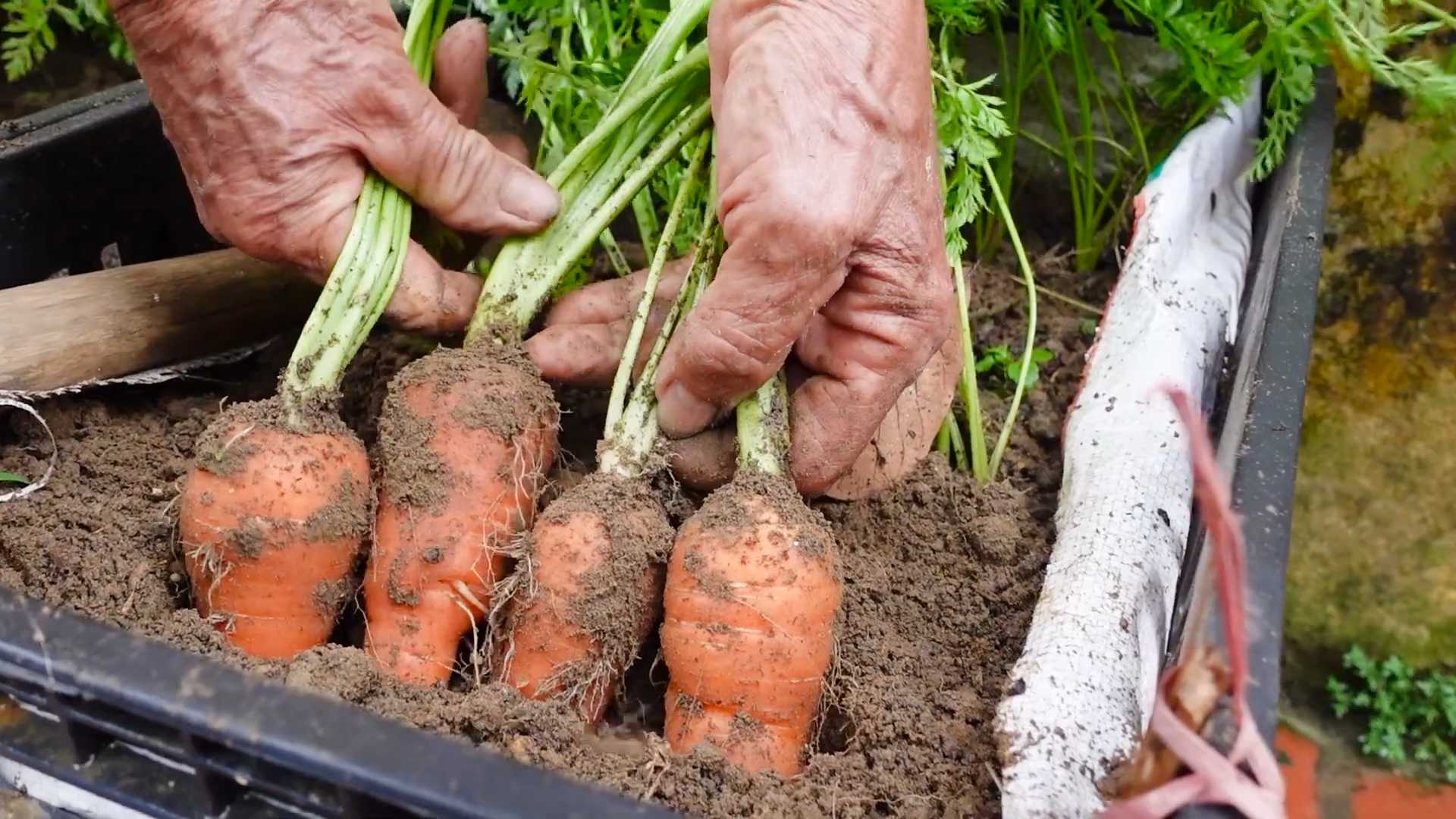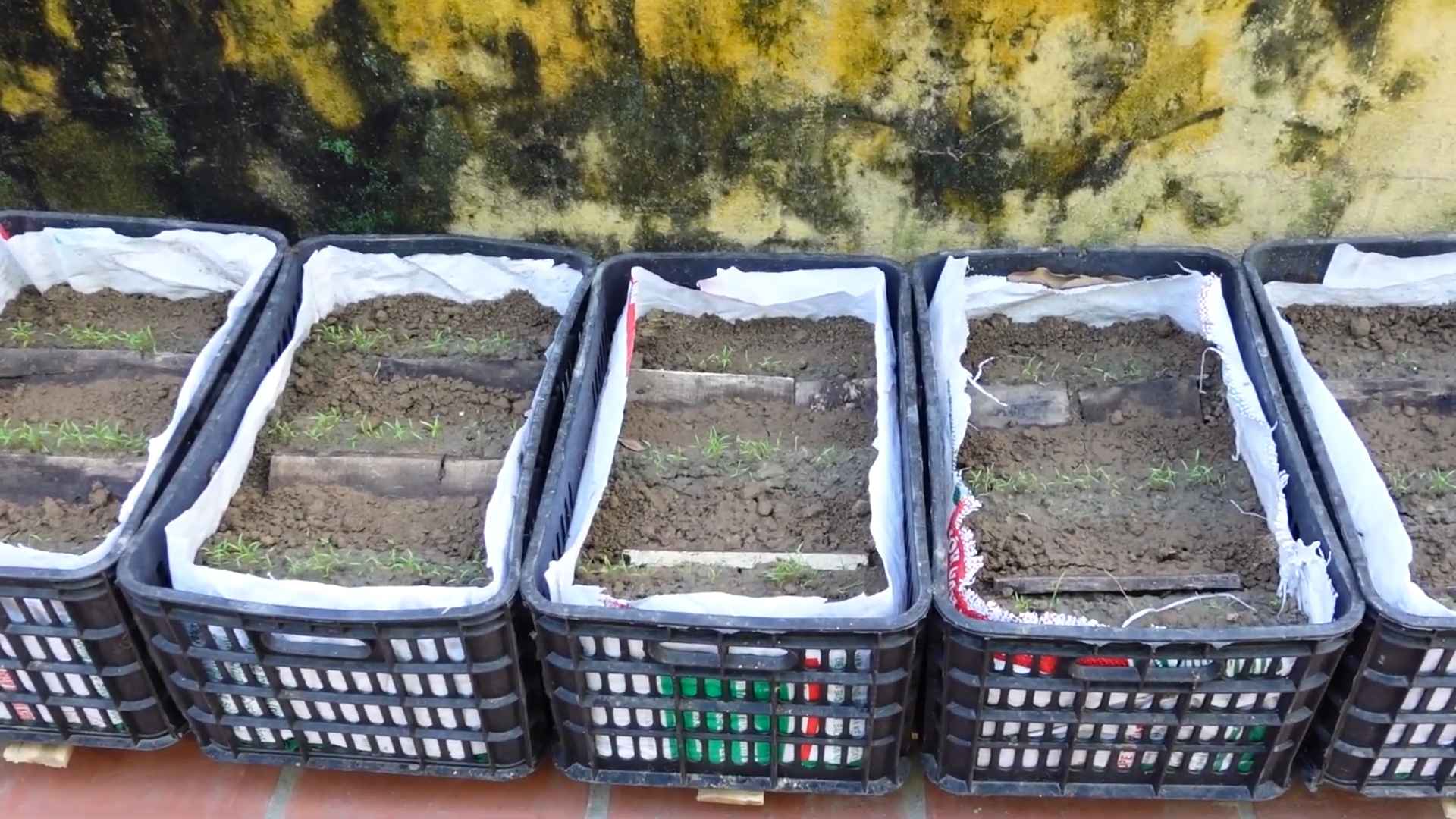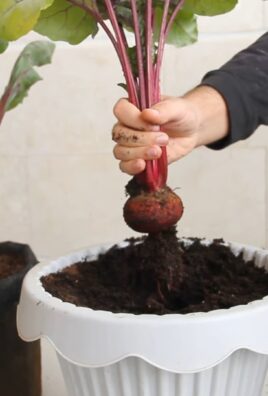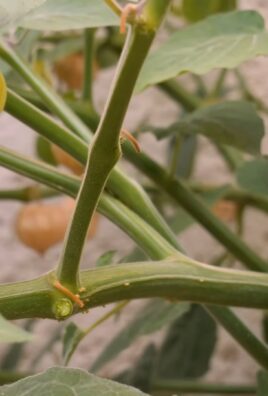Grow carrots at home, you say? Absolutely! Imagine plucking vibrant, sweet carrots straight from your own backyard, bursting with flavor far superior to anything you’d find at the grocery store. It’s not just a dream; it’s an achievable reality with a few simple tricks and a little DIY spirit. For centuries, cultivating our own food has been a cornerstone of human civilization, connecting us to the earth and providing sustenance. From ancient Egyptians growing carrots for medicinal purposes to modern-day gardeners seeking fresh, organic produce, the allure of homegrown vegetables remains strong.
But let’s be honest, sometimes growing carrots can feel like a gamble. You carefully sow the seeds, patiently water, and then…nothing! Or worse, you end up with stunted, forked roots that are more comical than culinary. That’s where these DIY tricks come in. I’m going to share some of my favorite hacks to help you grow carrots at home successfully, even if you’re a complete beginner. These aren’t just random tips; they’re tried-and-true methods that address common carrot-growing challenges, ensuring you’ll be harvesting a bountiful crop in no time. Get ready to ditch the store-bought carrots and embrace the joy of homegrown goodness!

Growing Carrots at Home: A Beginner’s Guide
Okay, so you want to grow carrots at home? Awesome! It’s surprisingly easy and incredibly rewarding to pull your own fresh, crunchy carrots straight from the earth. Forget those bland, store-bought things – homegrown carrots are bursting with flavor. I’m going to walk you through everything you need to know, from choosing the right variety to harvesting your bounty. Let’s get started!
Choosing the Right Carrot Variety
First things first, you need to pick your carrot variety. This isn’t just about color (though purple and yellow carrots are super fun!). It’s about matching the carrot to your growing conditions and preferences. Here’s a breakdown:
* Soil Type: This is crucial!
* Short, Round Carrots (like ‘Parisian’ or ‘Thumbelina’): These are your best bet for heavy, clay-rich soil. They don’t need to burrow deep.
* Medium-Length Carrots (like ‘Danvers’ or ‘Nantes’): These are more versatile and do well in moderately loose soil.
* Long, Slender Carrots (like ‘Imperator’): These need deep, loose, sandy soil. If your soil is compacted, they’ll end up stunted and misshapen.
* Growing Season:
* Early Varieties: These mature quickly (50-60 days) and are great for spring or fall planting.
* Main Crop Varieties: These take longer (70-80 days) and are ideal for summer planting.
* Flavor Preference:
* ‘Nantes’ types: Known for their sweet, tender flavor.
* ‘Imperator’ types: Have a slightly stronger, more earthy flavor.
* Heirloom varieties: Often boast unique flavors and colors.
I personally love ‘Nantes’ carrots because they’re so sweet and easy to grow. But experiment and find what you like best!
Preparing the Soil: The Key to Carrot Success
Seriously, soil prep is the most important part of growing carrots. They need loose, well-drained soil to develop properly. Rocky or compacted soil will result in forked, stunted, and generally unhappy carrots.
* Clear the Area: Remove any rocks, sticks, roots, or debris from the planting area. Even small stones can impede carrot growth.
* Loosen the Soil: This is where the work comes in. Use a garden fork or tiller to loosen the soil to a depth of at least 12 inches (more for long carrot varieties). Break up any large clumps of soil.
* Amend the Soil: Add plenty of organic matter, such as compost, well-rotted manure, or peat moss. This will improve drainage, aeration, and fertility. Work the organic matter into the soil thoroughly.
* Consider Raised Beds: If you have heavy clay soil, consider growing carrots in raised beds or containers filled with a well-draining potting mix. This gives you more control over the soil conditions.
* pH Level: Carrots prefer a slightly acidic soil pH of 6.0 to 6.8. You can test your soil pH with a soil testing kit and amend it accordingly.
I usually spend a good hour or two just preparing the soil. It’s worth it!
Planting Carrot Seeds: Tiny Seeds, Big Potential
Carrot seeds are tiny, which can make them a bit tricky to plant. But don’t worry, I’ve got some tips to help you out.
1. Timing is Everything: Plant carrot seeds 2-3 weeks before the last expected frost in spring, or 10-12 weeks before the first expected frost in fall. Carrots prefer cool weather.
2. Create Shallow Furrows: Use a hoe or your finger to create shallow furrows about 1/4 to 1/2 inch deep and 1-2 inches apart.
3. Sow the Seeds Sparsely: This is the hardest part! Carrot seeds are tiny, and it’s easy to sow them too thickly. Try to space the seeds about 1/2 inch apart. You can use a seed dispenser or mix the seeds with sand to make them easier to handle.
4. Cover the Seeds Lightly: Gently cover the seeds with a thin layer of soil or vermiculite.
5. Water Gently: Water the area gently with a watering can or hose with a gentle spray nozzle. Avoid washing away the seeds.
6. Keep the Soil Moist: Carrot seeds need consistent moisture to germinate. Keep the soil moist but not soggy until the seedlings emerge, which can take 1-3 weeks. I often cover the area with burlap or a piece of cardboard to help retain moisture. Just remember to remove it once the seedlings start to sprout.
Thinning Carrot Seedlings: Giving Them Room to Grow
Thinning is essential for growing healthy carrots. If you don’t thin them, the carrots will be overcrowded and won’t develop properly.
1. Wait Until Seedlings are 1-2 Inches Tall: Once the seedlings are about 1-2 inches tall, it’s time to thin them.
2. Thin to 1-2 Inches Apart: Carefully pull out the weaker seedlings, leaving the strongest ones spaced about 1-2 inches apart.
3. Thin Again Later: When the carrots are about 4 inches tall, thin them again to 3-4 inches apart. This will give them even more room to grow.
4. Water After Thinning: Water the area after thinning to help settle the soil around the remaining seedlings.
I know it’s hard to pull out those little seedlings, but trust me, it’s for the best!
Caring for Your Carrots: Watering, Weeding, and Feeding
Once your carrots are established, they need regular care to thrive.
* Watering: Water deeply and regularly, especially during dry periods. Carrots need consistent moisture to develop properly. Aim for about 1 inch of water per week.
* Weeding: Keep the area around your carrots free of weeds. Weeds compete with carrots for water and nutrients. Hand-pull weeds carefully to avoid disturbing the carrot roots.
* Fertilizing: Carrots are not heavy feeders, but they benefit from a light feeding of fertilizer. Use a balanced fertilizer or a fertilizer specifically formulated for root vegetables. Follow the instructions on the fertilizer package. I like to use compost tea as a gentle, organic fertilizer.
* Mulching: Apply a layer of mulch around your carrots to help retain moisture, suppress weeds, and regulate soil temperature. Straw, hay, or wood chips are good choices.
Pest and Disease Control: Keeping Your Carrots Healthy
Carrots are generally pest-resistant, but they can be susceptible to a few problems.
* Carrot Rust Fly: This is the most common carrot pest. The larvae tunnel into the roots, causing damage and making them unmarketable. Cover your carrots with row covers to prevent the flies from laying their eggs.
* Nematodes: These microscopic worms can damage carrot roots. Rotate your crops and amend the soil with organic matter to help control nematodes.
* Leaf Spot Diseases: These fungal diseases can cause spots on the leaves. Improve air circulation and avoid overhead watering to prevent leaf spot diseases.
I always try to use organic pest and disease control methods whenever possible.
Harvesting Your Carrots: The Sweet Reward
The moment you’ve been waiting for! Harvesting your own homegrown carrots is incredibly satisfying.
1. Check Maturity: Carrots are typically ready to harvest when they reach the size and color specified for their variety. Check the seed packet for information on maturity time.
2. Loosen the Soil: Before pulling the carrots, loosen the soil around them with a garden fork. This will make them easier to pull and prevent them from breaking.
3. Pull Gently: Grasp the carrot tops firmly and pull gently but firmly. If the carrots are difficult to pull, use the garden fork to loosen the soil further.
4. Wash and Store: Wash the carrots thoroughly and remove any excess soil. Store them in the refrigerator in a plastic bag or container. They should last for several weeks.
I love to eat my carrots raw, dipped in hummus, or roasted with herbs. They’re also great in soups, stews, and salads.
Troubleshooting: Common Carrot Growing Problems
Even with the best care, you might encounter some problems when growing carrots. Here are a few common issues and how to fix them:
* Forked or Stunted Carrots: This is usually caused by compacted soil or rocks in the soil. Make sure to prepare the soil thoroughly before planting.
* Bitter Carrots: This can be caused by hot weather or inconsistent watering. Keep the soil moist and provide shade during hot periods.
* Cracked Carrots: This is often caused by inconsistent watering. Water deeply and regularly,

Conclusion
So, there you have it! Growing carrots at home, while it might seem daunting at first, is surprisingly achievable and incredibly rewarding. Forget those bland, store-bought carrots that lack that vibrant, earthy sweetness. With a little planning and effort, you can cultivate a crop of crisp, flavorful carrots right in your own backyard, balcony, or even on a sunny windowsill.
This DIY trick isn’t just about saving money (though that’s certainly a perk!). It’s about connecting with your food, understanding where it comes from, and experiencing the pure joy of harvesting something you’ve nurtured from seed. Imagine the satisfaction of pulling a perfectly formed carrot from the soil, brushing off the dirt, and enjoying its unparalleled freshness. It’s a taste sensation you simply can’t replicate with commercially grown produce.
Beyond the superior flavor, growing your own carrots allows you to control what goes into them. You can avoid harmful pesticides and herbicides, ensuring that your family is consuming healthy, organically grown vegetables. Plus, it’s a fantastic way to get kids involved in gardening and teach them about the importance of healthy eating.
But the benefits don’t stop there. This method is incredibly versatile. You can adapt it to suit your specific space and preferences. For example, if you’re short on space, consider growing shorter, round varieties like ‘Parisian’ or ‘Thumbelina’ in containers. These are perfect for balconies and patios. Alternatively, if you have more room, you can experiment with longer, more traditional varieties like ‘Nantes’ or ‘Danvers’.
And don’t be afraid to get creative with your soil mix. While the recommended mix of potting soil, compost, and sand works well, you can also add other amendments like bone meal or kelp meal to boost nutrient levels and promote healthy root growth. You can also try succession planting, sowing new seeds every few weeks, to ensure a continuous harvest throughout the growing season.
Growing carrots at home is more than just a gardening project; it’s an investment in your health, your well-being, and your connection to the natural world.
We wholeheartedly encourage you to give this DIY trick a try. It’s easier than you think, and the rewards are immeasurable. Once you’ve tasted the difference between homegrown and store-bought carrots, you’ll never go back.
And most importantly, we want to hear about your experience! Share your photos, tips, and challenges in the comments below. Let’s build a community of home gardeners and inspire others to discover the joy of growing their own food. What variety did you try? What challenges did you face, and how did you overcome them? Your insights could be invaluable to other aspiring carrot growers. So, get your hands dirty, plant some seeds, and let’s grow some delicious carrots together!
Frequently Asked Questions (FAQ)
What is the best time of year to plant carrots?
The best time to plant carrots depends on your climate. In general, carrots are a cool-season crop, so they thrive in temperatures between 60°F and 70°F (15°C and 21°C). For most regions, this means planting in early spring or late summer/early fall. Spring plantings should occur as soon as the soil can be worked, typically a few weeks before the last expected frost. Fall plantings should be timed so that the carrots have enough time to mature before the first hard frost. In warmer climates, you may be able to grow carrots year-round. Check your local gardening resources for specific planting dates in your area.
What kind of soil is best for growing carrots?
Carrots need loose, well-drained soil to grow properly. Rocky or compacted soil can cause the roots to become stunted or misshapen. The ideal soil is sandy loam, which is a mixture of sand, silt, and clay. It should also be rich in organic matter. Before planting, amend your soil with compost or well-rotted manure to improve its fertility and drainage. Avoid using fresh manure, as it can cause the roots to fork. The soil pH should be between 6.0 and 6.8. If your soil is heavy clay, consider growing carrots in raised beds or containers filled with a suitable potting mix.
How often should I water my carrots?
Carrots need consistent moisture to germinate and grow. Water deeply and regularly, especially during dry periods. Aim to keep the soil consistently moist but not waterlogged. Overwatering can lead to root rot, while underwatering can cause the roots to become tough and bitter. A good rule of thumb is to water when the top inch of soil feels dry to the touch. Mulching around the plants can help to retain moisture and suppress weeds.
How much sunlight do carrots need?
Carrots need at least six hours of sunlight per day to thrive. Choose a planting location that receives full sun for the majority of the day. If you live in a hot climate, some afternoon shade may be beneficial to prevent the roots from overheating.
Why are my carrots forking or splitting?
Forking or splitting carrots can be caused by several factors, including rocky soil, compacted soil, uneven watering, and excessive nitrogen in the soil. To prevent forking, make sure your soil is loose, well-drained, and free of rocks and debris. Avoid over-fertilizing with nitrogen-rich fertilizers. Water consistently and deeply to prevent the soil from drying out.
What are some common pests and diseases that affect carrots?
Some common pests that affect carrots include carrot rust flies, aphids, and nematodes. Carrot rust flies lay their eggs near the base of the plants, and the larvae tunnel into the roots, causing damage. Aphids suck the sap from the leaves, weakening the plants. Nematodes are microscopic worms that live in the soil and feed on the roots. To control pests, you can use insecticidal soap, neem oil, or row covers. Common diseases that affect carrots include leaf blight and root rot. Leaf blight causes brown spots on the leaves, while root rot causes the roots to decay. To prevent diseases, make sure your soil is well-drained and avoid overwatering.
How do I know when my carrots are ready to harvest?
Carrots are typically ready to harvest 60-80 days after planting, depending on the variety. You can check the size of the roots by gently pulling back the soil around the base of the plants. The carrots are ready to harvest when they reach the desired size and color. You can also harvest them earlier for baby carrots. To harvest, gently loosen the soil around the carrots and pull them straight up.
Can I grow carrots in containers?
Yes, you can definitely grow carrots in containers! Choose a container that is at least 12 inches deep and wide to accommodate the roots. Use a well-draining potting mix and water regularly. Shorter, round varieties like ‘Parisian’ or ‘Thumbelina’ are particularly well-suited for container gardening.
How do I store my harvested carrots?
To store your harvested carrots, remove the tops and gently brush off any excess dirt. Do not wash them until you are ready to use them. Store the carrots in a cool, dark, and humid place, such as the refrigerator or a root cellar. You can wrap them in a damp paper towel or store them in a plastic bag with a few holes for ventilation. Carrots can typically be stored for several weeks or even months under the right conditions.
What are some different varieties of carrots I can grow?
There are many different varieties of carrots to choose from, each with its own unique characteristics. Some popular varieties include ‘Nantes’, ‘Danvers’, ‘Chantenay’, ‘Imperator’, ‘Parisian’, and ‘Thumbelina’. ‘Nantes’ carrots are long, slender, and sweet. ‘Danvers’ carrots are slightly shorter and thicker, with a more robust flavor. ‘Chantenay’ carrots are short and stocky, with a blunt tip. ‘Imperator’ carrots are long and tapered, with a smooth skin. ‘Parisian’ and ‘Thumbelina’ carrots are small and round, perfect for container gardening. Experiment with different varieties to find your favorites!




Leave a Comment